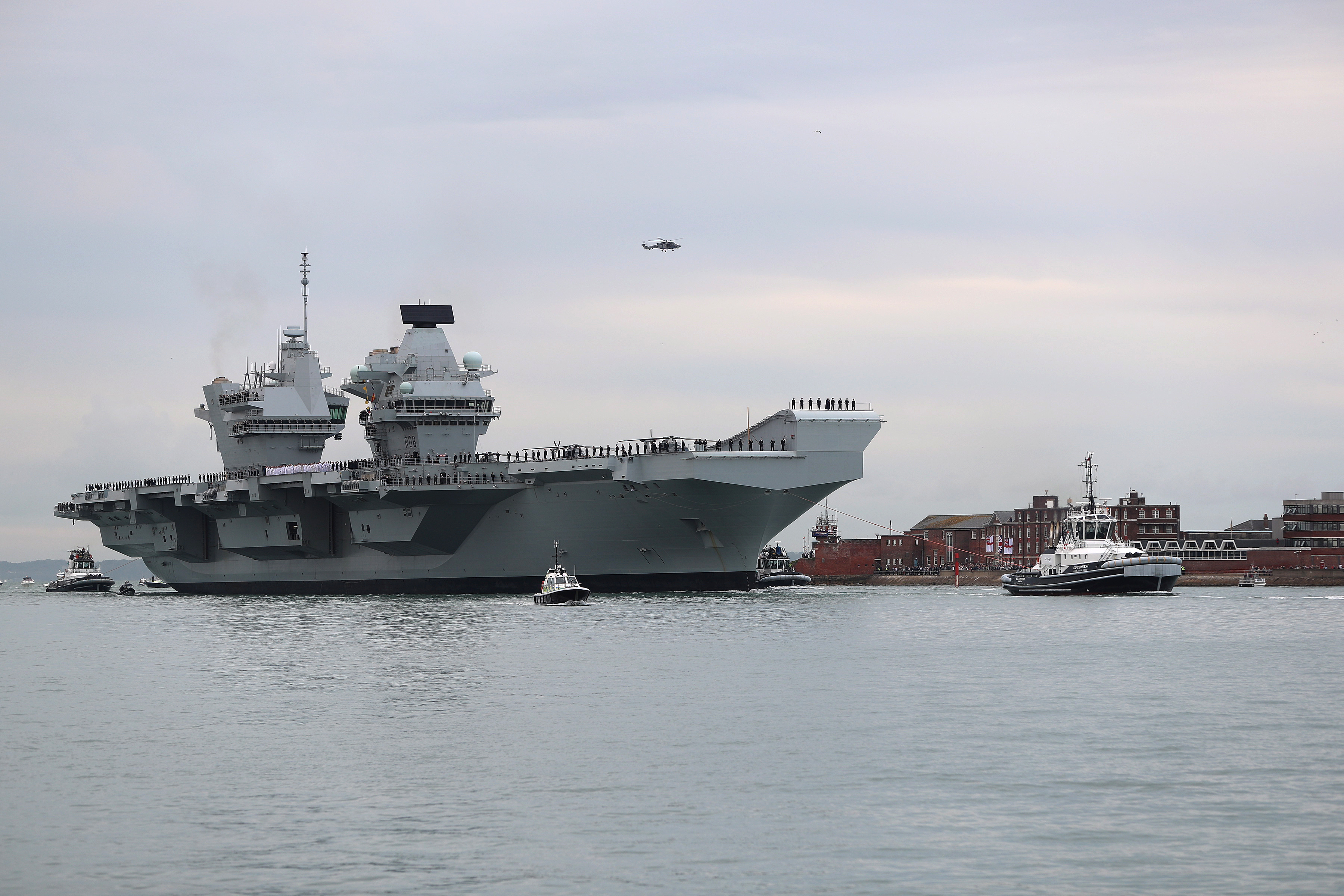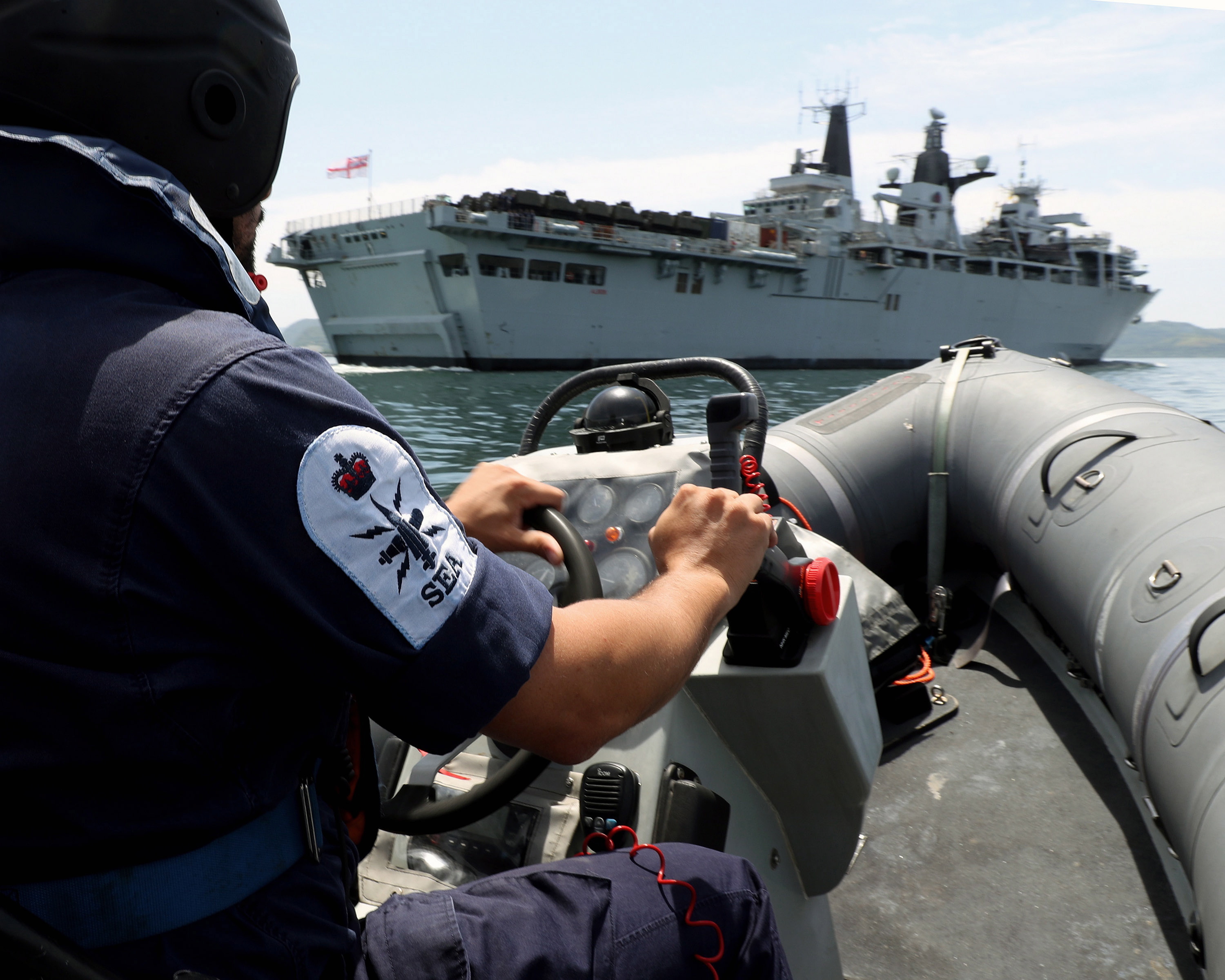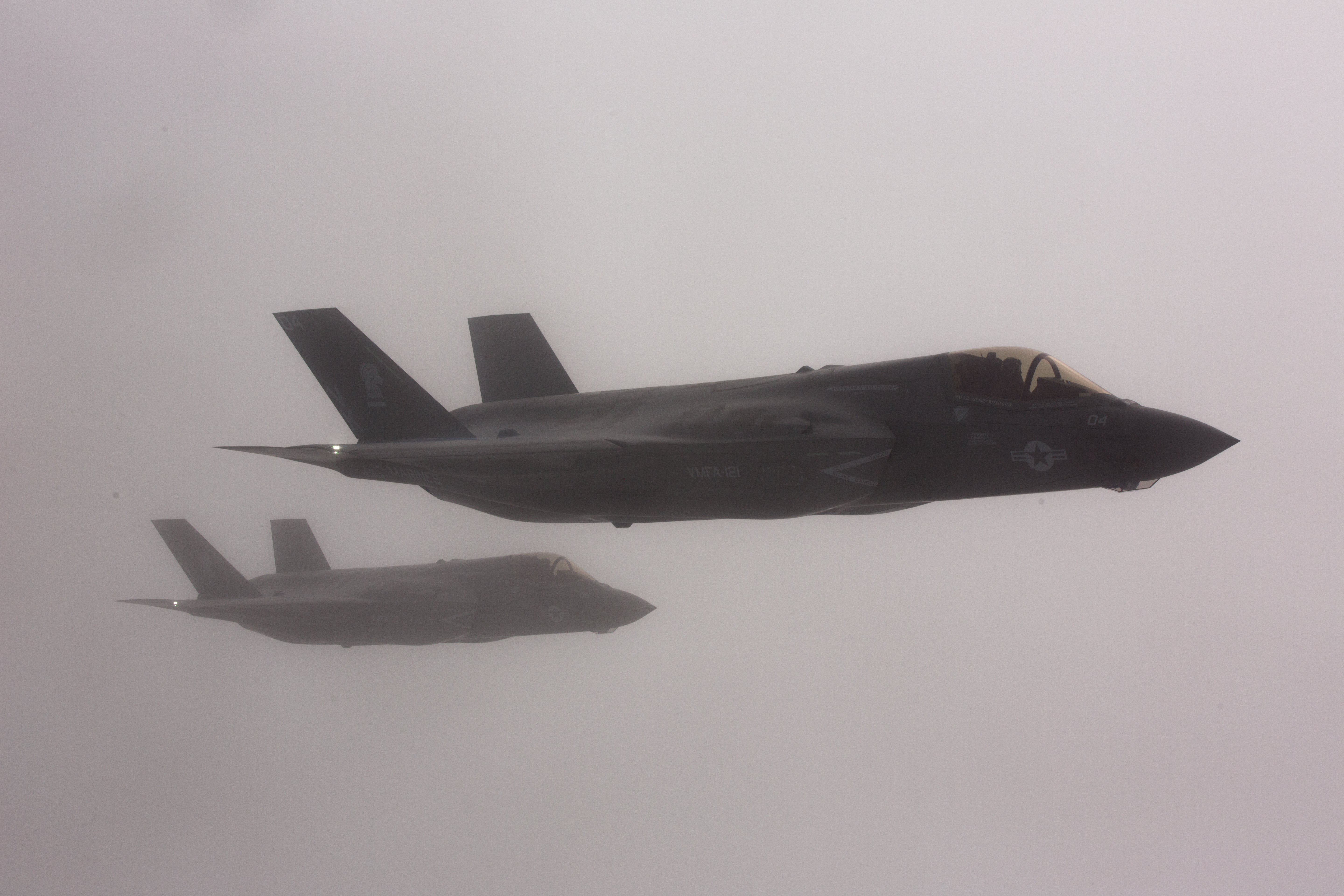
LONDON — The U.K.’s new Queen Elizabeth-class aircraft carriers should be able to conduct warfighting missions without support from allied forces, an influential parliamentary committee insisted last week.
The regeneration of fading anti-submarine warfare (ASW) capabilities, the retention of amphibious shipping and the acquisition of a surface ship-launched land attack missile must also be top priorities for a cash-strapped Royal Navy, according to the House of Commons’ Defence Committee (HCDC).
Last month the UK’s national security adviser, Mark Sedwill, claimed that the carriers HMS Queen Elizabeth (R08) and the future HMS Prince of Wales (R09) would be unlikely ever to deploy on high-end combat operations unless escorted by friendly units. The 70,000-ton platforms would “inevitably be used in a context of allied operations of some kind, if used in a contested environment”, he told the committee in May.
But in a report published on June 18, the HCDC responded: “Operating aircraft carriers without the sovereign ability to protect them is complacent at best and potentially dangerous at worst. The U.K. should be able to sustain this capacity without recourse to other states.”
The report – entitled “Beyond 2 percent: A preliminary report on the Modernizing Defence Program” – is intended to pre-empt the imminent release, by the Ministry of Defence, of the key findings of a major review of U.K. military capabilities and requirements. The MoD faces a funding shortfall of up to $26.5 billion over the next decade.
The Royal Navy is fighting fiscal battles on several fronts. A six-year delay in approving the construction of new Dreadnought-class strategic nuclear missile submarines means the existing Vanguard-class SSBNs will have to remain operational well past their design life expiry date, the report notes. There has been a “dramatic increase in the cannibalization of parts from ships and helicopters, and even from nuclear submarines, due in part to the reduction in support budgets,” according to the HCDC.
Stringent controls are also being applied to non-contractual spending, resulting “in Royal Navy ships being kept in port when they would normally be on patrol, aircraft flying hours being reduced and cuts being imposed on training and exercises across all three services.”
Although they acknowledged the emerging threats posed by Russia (characterised by the Salisbury nerve agent attack in March), Iran and North Korea, officials originally planned a ‘fiscally neutral’ defence and security budget – meaning that increases in some areas would have to be offset by reductions elsewhere.
Options under consideration included slashing the strength of the Royal Marines, selling the Albion-class landing platform dock (LPD) ships HMS Albion (L14) and HMS Bulwark (L15), delegating future amphibious operations to the French Navy, and cutting the number of F-35B Lightning II Joint Strike Fighter to be procured. Major cuts to the British Army and Royal Air Force were also being discussed.

With discontent growing within the armed services and among concerned observers, the Modernising Defence Programme (MDP) rethink was ordered by Defence Secretary Gavin Williamson soon after he took office last year.
Pressure is now mounting on the government to boost military spending to tackle the new state-based threats while avoiding further cutbacks to existing capabilities. Britain spends 2 percent of national income on defense, meeting the NATO minimum, but the HCDC is urging a return to the 3 percent figure that pertained in the mid-1990s.
Williamson has already said the MDP will not be constrained by the old ‘fiscally neutral’ policy, telling the committee during an evidence session in February: “No one wants to make the wrong decisions. It goes without saying that where you have a world that presents much greater and greater threats, you need to step up to the challenge in making sure that you meet them. That is making sure that you have the right capabilities and the right support, and that they are properly financed”.
In its ‘Beyond 2 percent ’ report, the committee calls on the MoD to prioritize ASW, carrier group regeneration, and the acquisition of a surface-launched cruise missile. The lawmakers also say the navy should consider procuring landing helicopter dock ships to replace the Albion-class LPDs, which are due to retire in the 2030s.
“The most serious maritime issue which has been recognized by ministers, and in the evidence we have taken, is the need for greater anti-submarine warfare capacity”, the HCDC states.
Noting a tenfold increase in Russian submarine activity in the North Atlantic in recent years, and the threat this poses to transatlantic sea lines of communication, undersea communication cables, the Royal Navy’s SSBN force and security in the Arctic region, the report says that ASW is a “complex and resource-intensive exercise, and the world-leading capability which the UK maintained in the Cold War has been substantially reduced.
“Many of those who submitted written evidence argued that the Royal Navy’s numbers of attack submarines and ASW frigates were far too low. This problem has been compounded by the late arrival into service and low availability of the highly capable Astute-class, which has caused a temporary reduction in the number of attack submarines.
“Particular concern was expressed about the probability that the forthcoming class of Type 31e frigates may have only minimal ASW capability. As the Royal Navy is currently finding in mine clearance capability, the use of unmanned systems or manned-unmanned teaming may be the future of ASW.”
While Britain is acquiring nine Boeing P-8A Poseidon maritime patrol aircraft – operated by the Royal Air Force – to restore and enhance its long-range airborne ASW capabilities, the committee argues that more aircraft may be required.

“We have received detailed written evidence from former RAF officers with extensive experience of ASW operations who argue that the intended aircraft and crew provision for the MPA force is too low to fulfill the range of tasks under its responsibility”, the report says.
“Unrealistic assumptions have been made about the ability of NATO allies to contribute to MPA provision and that at least 16 aircraft and a higher crewing requirement is needed to attain the necessary coverage.”
Turning to the Queen Elizabeth-class aircraft carriers, the HCDC says that generating a carrier group – consisting (at the maximum level of deployment) of two air defense destroyers, two ASW frigates, an attack submarine and logistics shipping – will become a priority task for the navy.
“Generating such a force for any length of time is likely to put considerable strain on the Royal Navy, given the current size of the fleet”, the report states. “The carriers are likely to be operating within larger allied groups in the future, but we disagree with the National Security Adviser that we should proceed on the basis this is inevitable.
“Operating aircraft carriers without the sovereign ability to protect them is complacent at best and potentially dangerous at worst. The U.K. should be able to sustain this capacity without recourse to other states.”
The committee is asking the MoD to clarify whether it still intends to buy the 138 F-35 strike fighters previously promised, and whether it will add ‘A’ variant conventional take-off and landing aircraft to the short/vertical ‘B’ types already being procured for carrier operations.
As far as amphibious capabilities are concerned, the committee says the proposed disposal of the Albion-class LPDs was “militarily illiterate”. Its report states: “The Royal Navy will at some point in the next decade need to consider replacing the amphibious assault ships which are due go out of service in the early 2030s. A landing helicopter dock design, combining the ability to operate landing craft and aircraft, should be considered.”
Commenting on missile capabilities, Beyond 2 percent contrasts the variety of land attack missiles available to the U.S. and French naval forces that targeted Syrian chemical weapons facilities in April with the sole option available to the Royal Navy: the submarine-launched Tomahawk Land Attack Missile (TLAM). The report also notes that the service could lose its Harpoon heavy anti-ship missiles in 2020.
Although the Future Cruise/Anti-Ship Weapon planned by Britain and France will expand the Royal Navy’s missile capabilities from the 2030s, the HCDC wants to see Harpoon retained and TLAM extended to the surface fleet as interim measures.

“On wider commitments, the government has signalled an intention to establish a more substantial presence ‘east of Suez’. There will be a continual presence of Royal Navy vessels in the Asia-Pacific region this year and the Defence Secretary recently announced a more substantial permanent presence in the Gulf, where the Royal Navy’s still world-class mine countermeasures vessels are highly valued by our Middle Eastern allies and, in particular, by the U.S. Navy,” the report states.
“The growing ambition which the UK has outside of the Euro-Atlantic area will be a largely maritime-led endeavor. This needs to be backed up with sufficient resources to make a strategically significant contribution to our allies in the region. Without this, the Royal Navy may struggle to meet these new commitments in addition to an already onerous series of standing tasks.”
Also highlighting major weaknesses in Britain’s air and ground forces, the HCDC warns that the country’s military has been hampered during the past two decades by a focus on land-based counter-insurgency and stabilization operations overseas.
“The strategic environment has changed for the worse, and this defense review must reflect this”, the report concludes. “The UK needs to be in a position to deter and challenge peer adversaries equipped with a full range of modern military technologies who seek to use them in ways that confuse our traditional conceptions of warfare… The likelihood of operating in contested environments across all five domains – maritime, land, air, cyber and space should be reflected in this force structure.”





